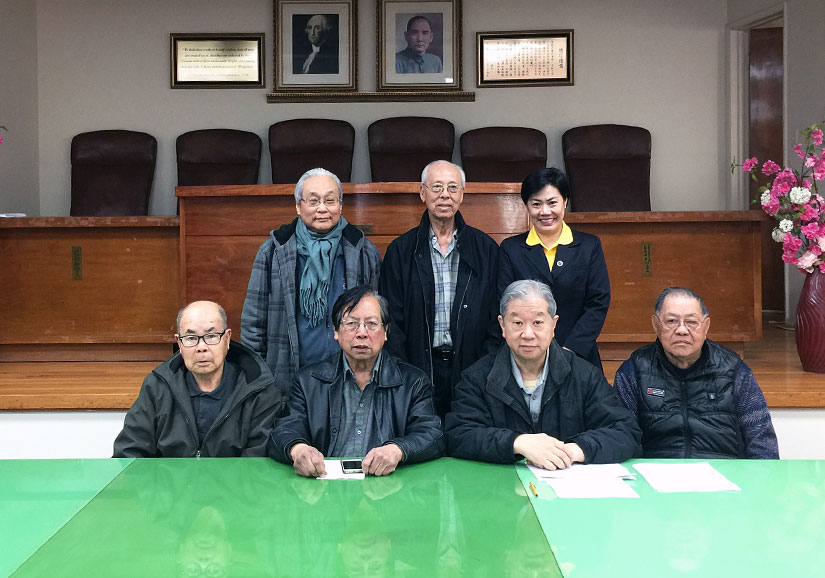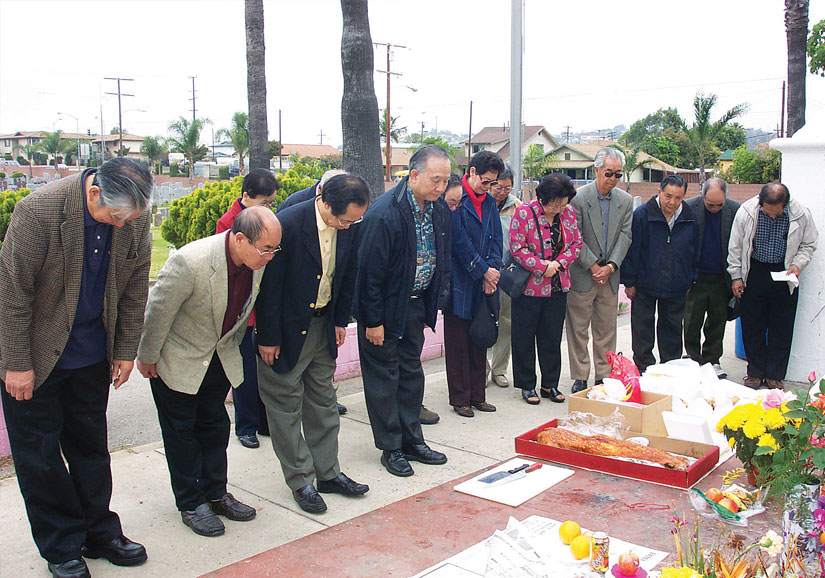Chinese Cemetery of Los Angeles
Restoration of the Eastern CemeterySUMMARY
At the height of anti-Chinese zealotry in the U.S. during the 1920’s and 1930’s, Chinese were barred from purchasing burial plots in all American cemeteries. Fortunately, in 1922, through the efforts of good men like Mr. Hung Tak Wong and Shao Hing Lee, a piece of land at the corner of First Street and Eastern Avenue in East Los Angeles was purchased for use as burial ground for Los Angeles’ Chinese. It was later placed under the management of CCBA’s Cemetery Division, a group of fve persons elected annually by CCBA. The fee charged was only US $30. Sadly the cemetery deteriorated gradually to a weed-flled patch due to lack of maintenance. Although Mr. Shet Tin Lau later assumed restorative responsibilities, his hard work was terminated by lack of funds and other problems.In 1958, Chinatown community leaders spearheaded the effort to overhaul the cemetery again. They formed the Management Committee of the Los Angeles Chinese Cemetery under the direction of then Committee Chairman Poy Wong, Vicechair Kea Woo Gee, Treasurer Kit Fun Quon, and Wah Shau Lee, etc. In addition, Poy Wong, Kit Fun Quon and Wah Shau Lee provided a loan, interest free, to purchase the three-story property, including basement, at 940 Chungking Road as headquarter for the Cemetery operation.
As the regulations governing immigration relaxed after WWII, waves of Chinese immigrants arrived on U.S. soil. To meet the need for the expansion of the Cemetery, Mr. Poy Wong led the negotiation for the purchase of four parcels adjacent to the Cemetery, and applied to County and State governments for the construction of streets and drainage systems. The completion of this expansion project that took a decade was in large part accomplished through the generous donations by the Chinese community and the trust the donors placed in the key people mentioned above.
Not only did the Cemetery’s total area increase upon expansion, its organizational structure also become more integrated. Each plot sold for $250, and $500 each for special plots. CCBA amended its bylaws, merging the Cemetery Fund Management Committee and Cemetery Division to form the Los Angeles Chinese Cemetery Committee.
As the operation and fnances of the Cemetery
proceeded on track, Mr. Jon Wong, then President
of CCBA, suggested purchasing an area in Forest
Lawn, Hollywood Hills as the second cemetery
site. The initial purchase was for 90 plots, each
costing $350, plus a $50 maintenance fee. Future
purchases by the Cemetery Fund could be contemplated when fnancially feasible. With inflation
and other factors, presently the plots cost $1,000
each, and altars for offerings are made available.
The Forest Lawn, Hollywood Hills Chinese Cemetery is considered to be an auspicious feng shui site by geomancy experts.
The Association Chairman Including: Poy Wong, Jon Wong, Dee Gin Lur, Willman Jue, Tommy Lee Gi Hao Cheung, Wayne Ma, James Wong, Sun Chow Wong, William Tam.
Chinese who arrived in the early days were mostly poor laborers whose travail & perseverance deserved a great deal of credit for the successful completion of the transcontinental railroad system and the taming of the West. However, they were met with discrimination and exclusion, even denied burial in American cemeteries. In 1922, CCBA purchased and established the Chinese Cemetery on East Los Angeles’ Eastern Avenue to provide a resting place for our compatriots. But the passage of time brought on natural and man-made damages.
In 2006, CCBA formed the Committee for the Reparation of the Cemetery of Los Angeles Chinese and the building of the “Offer of Respect” Pavilion. The refurbished Cemetery’s layout is orderly and its ambience serene, with verdant lawns and evergreen vegetation. It is an apt representation of our tradition of flial piety, reminding future generations to commemorate our ancestors at designated remembrance days and anniversaries
The Forest Lawn, Hollywood Hills Chinese Cemetery is considered to be an auspicious feng shui site by geomancy experts.
The Association Chairman Including: Poy Wong, Jon Wong, Dee Gin Lur, Willman Jue, Tommy Lee Gi Hao Cheung, Wayne Ma, James Wong, Sun Chow Wong, William Tam.
Chinese who arrived in the early days were mostly poor laborers whose travail & perseverance deserved a great deal of credit for the successful completion of the transcontinental railroad system and the taming of the West. However, they were met with discrimination and exclusion, even denied burial in American cemeteries. In 1922, CCBA purchased and established the Chinese Cemetery on East Los Angeles’ Eastern Avenue to provide a resting place for our compatriots. But the passage of time brought on natural and man-made damages.
In 2006, CCBA formed the Committee for the Reparation of the Cemetery of Los Angeles Chinese and the building of the “Offer of Respect” Pavilion. The refurbished Cemetery’s layout is orderly and its ambience serene, with verdant lawns and evergreen vegetation. It is an apt representation of our tradition of flial piety, reminding future generations to commemorate our ancestors at designated remembrance days and anniversaries
Restoration of the Eastern Cemetery
The Cemetery of Los Angeles Chinese fundraising event in 2007 garnered the support of numerous generous donors. Their names were etched on a commemorative stone slab
Those involved in the Reparation Committee include many members of the CCBA.
Following is a partial list of donors in their Chinese names. The total donation is in excess of two hundred and sixty thousand dollars.





